| Title | Pages |
|---|---|
| Expression Profiling and Pathway Analysis of Iron Oxide Nanoparticles Toxicity on Human Lung Alveolar Epithelial Cell Line Using Microarray Analysis Toxicogenomics is a developing area searching for cellular pathways and mechanisms including cancer, immunological diseases, environmental responses, gene-gene interactions and drug toxicity. Nanoparticles (NPs) become important candidates for analyzing in toxicogenomic experiments because of their unusual properties in various biological activities. Therefore, we examined the nanotoxicity of iron oxide (Fe2O3) on gene expression profiling of human alveolar epithelial cells (HPAEpiC) in the study. For this aim, iron oxide nanoparticles were synthesized by zone melting method and characterized via using X-ray crystallography (XRD) and transmission electron microscope (TEM) techniques. Cell viability and cytotoxicity were determined by 3-(4,5-dimethyl-thiazol-2-yl) 2,5-diphenyltetrazolium bromide (MTT), neutral red (NR) and lactate dehydrogenase (LDH) release tests. Whole-genome microarray expression analysis was performed to explore the effects of iron oxide nanoparticles on gene expression in cultured human alveolar epithelial cells. For further analyses, these genes were functionally classified by using DAVID (The Database for Annotation, Visualization and Integrated Discovery) with gene ontology (GO) analysis. The results from this study indicated that iron oxide-mediated toxicity directly or indirectly affecting the regulation of cell proliferation, response to hormone stimulus, estrogen stimulus, cytokine activity and blood circulation by stimulating diverse genes. 
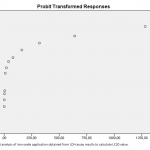

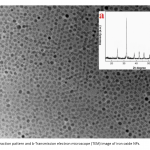
|
309 - 318 |
| Designing of Alternative Polymeric Nano-Chelator for Treatment in Acute Iron Poisoning by Molecular Imprinting Approach The aim of this study is to develop an alternative polymeric chelating agent for rapid and selectively removal with high capacity of iron (Fe3)+ ions from the gastrointestinal (GI) tract for the oral treatment of acute iron poisoning. For this purpose, Fe3+ imprinted poly(hydroxyethyl methacrylate-N-methacryloyl-(l)- glutamic acid) (HEMA-MAGA) nanoparticles were synthesized by surfactant free emülsiyon polymerization. Molecular imprinting (MIP) technique was used to enhance the selectivity of nanoparticles. Due to being carboxyl and amide groups on the MAGA monomer, it was chosen as a chelating agent for Fe3+ ions. Before the synthesizing of Fe3+ imprinted polymer, Fe3+ ions were complexed with (N-methacryloyl-(l)- glutamic acid) MAGA and then Fe3+ imprinted nanoparticles were synthesized in the presence of this Fe3+-MAGA complexes. Poly(HEMA-MAGA) nanoparticles were characterized by infrared spectroscopy (FTIR), atomic force microscopy (AFM). Average particle size and size distribution also determined by zeta sizer. The specific surface area and mead diameter of the Fe3+ imprinted poly(HEMA-MAGA) nanoparticles was 895 m2.g-1 and 95.3 nm, respectively. The maximum Fe3+ ions binding capacity of the poly(HEMA-MAGA) nanoparticles at pH:4.0 were 206.4 mg.g-1 nanoparticles in intestinal mimicking solution(IMS). Fe3+ removal performance of the Fe3+ imprinted poly(HEMA-MAGA) nanoparticles with presence of other ions, optimum medium pH, temperature and equilibrium binding time were also investigated. Fe3+ removal studies were performed in both aqueous solution and intestinal mimicking solution. The results indicate that Fe3+ imprinted poly(HEMA- MAGA) nanoparticles is an alternative chelating agent for the selective Fe3+ ions removal in a short time and with very high capacity. 



|
319 - 331 |
| DNA from Leaf or Stem: A Comparative Work on Dianthus L. for DNA Barcoding Analysis with Four Commercial Extraction Kits Four widely used DNA extraction kits, GeneAll GenExTM Plant kit, GeneMATRIX Plant & Fungi DNA Purification kit, DNeasy Plant kit and E.Z.N.A. Plant DNA kit, were compared using leaf and stem tissues of Dianthus specimens to isolate high yield and quality genomic DNA for DNA barcoding. Traditionally, leaves are used as a main source of genomic DNA but extracting DNA from Dianthus leaves might be more difficult because of sclerenchymatic tissues. Genomic DNA was extracted based on manufacturers’ protocols and amplified for seven barcode regions by PCR. DNA concentrations were measured using fluorometer and the quality of DNA and PCR products were showed on agarose gel. Amplification results were evaluated in terms of Polymerase Chain Reaction (PCR) success for DNA barcoding research. Additionally, comparisons between the efficiency of commercial kits were discussed in terms of cost, labor and time-consuming. Results presented here, DNA extraction carried out from both stem and leaves of Dianthus specimens successfully. Although, all kits performed well for PCR amplification, GeneMATRIX was found the best efficient kit for isolating high quality DNA of Dianthus specimens used in the study for leaf and stem tissues. 



|
333 - 339 |
| Effects of Bacterial Phbv-Conduit Used for Nerve Regeneration on Oxidative Stress Parameters in Rats Due to lack of self-repair mechanism in neuronal tissue, biomaterials have been widely studied to regenerate damaged nerve tissue. Despite having advantages, nano materials may cause oxidative stress and this could affect the treatment. In the present study, whether PHBV [poly (3-hydroxybutyrate-co-3-hydroxyvalerate)] used for axonal regeneration could lead to lipid peroxidation, protein oxidation in rats or not and also its effects on antioxidant molecules was explored. In the study, PHBV nanofiber membranes were formed by electrospinning and conduits were formed by using the nanofiber membrane. After the formation of a 1 cm gap in the rat peritoneal nerves, PHBV conduits were placed. Animals were sacrificed at 17th week after the operations. Malondialdehyde (MDA), advanced oxidation protein products (AOPP), glutathione (GSH) levels and superoxide dismutase (SOD) activities of livers, as well as surrounding tissues of conduits (muscles) and serums were measured. Compared to control groups, MDA, AOPP and GSH levels and SOD activites in all graft group serums showed a significant increase, while only MDA and AOPP levels in tissues were statistically higher. Therefore, these findings suggest that PHBV nerve graft used for sciatic nerve defects may lead to oxidative stress in rats. 



|
341 - 348 |
| Antimicrobial Activity of Hemolymph and Venom Obtained from Some Scorpion Species The aim of this study was to determine the antibacterial and antifungal activities of hemolymph and venom obtained from some scorpion species. Venom samples were obtained by electrical stimulation method from five different scorpion species. Again, hemolymph fluids were obtained from five different scorpion species. Antimicrobial activities of hemolymph and venom diluted 1:1 with sterile saline were tested against a total of 10 microorganisms including seven bacteria and three yeasts using disc diffusion method. Venom samples of Protoiurus kraepelini showed inhibition zones of 9-20 mm on all microorganisms tested. Venom from this species has the highest antibacterial activity against Bacillus subtilis. The venom samples of Aegaeobuthus gibbosus were effective (7-12 mm) on all microorganisms except Enterococcus faecalis and Micrococcus luteus. In addition, it was found that venoms obtained from Androctonus crassicauda, Hottentotta saulcyi and Leiurus abdullahbayrami have different levels of antibacterial effect but no antifungal effect against Candida species. Scorpion hemolymphs have been shown to have similar effects against Gram-positive and Gram-negative bacteria. Besides, the obtained hemolymphs have been found to have low effect (7-9 mm) on microorganisms. 

|
349 - 354 |
| Ethyl Methanesulfonate (EMS) Mutation for Hyper Protease Production by Bacillus subtilis E6-5 and Optimization of Culture Conditions In this study is aimed the improvement of Bacillus subtilis E6-5 for high protease production by EMS treatment as chemical mutagen. The 82 mutants were screened on skim milk agar plates and, the mutant with maximum protease activity was named KE20. The mutant was quantitatively tested, and showed 9.2 times more protease activity than the parental strain. The effects of nutritional and physical factors on the protease production of mutant KE20 were investigated. The best carbon and nitrogen sources were corn starch and skim milk. No effect was observed when metal ions were used alone. In the physical parameters, the best results were obtained at 37°C, pH 7.0, 150 rpm, 3% as inoculum size and 18 has inoculum age. A new medium was made by optimizing the incubation conditions and enzyme yield enhanced 79% compared to basal medium. The mutant KE20 strain may have a prominent potential for protease production on an industrial scale. 



|
355 - 365 |
| Meroplankton Composition of a Low Productive Lagoon System (Köyceğiz-Dalyan): Temporally but Not Spatially Variations Seasonal meroplankton abundances of Köyceğiz-Dalyan Lagoon System were examined in this study. Also, changes in the diversity and abundance of meroplanktonic larvae because of the different two salinity layers of the system were investigated. Meroplankton samples were taken by Unesco standart plankton net with 200 micrometer mesh size horizontally from three stations. Temporal and spatial differences in the abundance of meroplankton groups were examined by permutational multivariate analysis of variance (PERMANOVA). Environmental parameters which are temperature, salinity and dissolved oxygen were measured from the surface. Meroplankton groups of the study area were nauplius, zoea, cyprid larva, stomatopod larva, hydrozoan larva, ephyra, polychaeta larva, fish egg, fish larva and gastropod larva. Meroplankton and holoplankton abundances showed two peaks in April and October. There were statistically significant differences in the abundance of meroplankton amongst seasons especially between summer-winter and winter-spring. In October and November Mediterranean water enters the Köyceğiz-Dalyan Lagoon System through the bottom of the system, whereas in winter and spring, the lagoon and coastal zone were under the influence of Lake Köyceğiz. 



|
367 - 372 |
| Effect of Slope on the Analysis of Forest Fire Risk Forest fires are mainly caused by human activities. Therefore, the forest fire risk in an area is under the influence of human activities that may cause forest fires if the vegetation and topographic features are also suitable. While evaluating the effect of slope on forest fire risk in our study, It has been analyzed with geographical information systems (GIS) the starting points of forest fires have occurred in Turkey in the last 10 years. Thus, an objective assessment try to has been made about the effect of slope on forest fire risk. According to the analysis results, 40.53% of forest fires occur in Turkey the range of 0-10% slope. In addition, 87.16% of these fires occur at 0-30% slope. As a result, contrary to the general belief, it has been determined that as the slope increases, the risk of forest fire decreases. The slope affects the fire inversely proportional, On the other hand, it affects the forest fire danger in direct proportion. 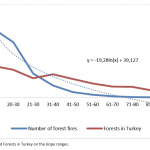



|
373 - 379 |
| Synthesis and Antimicrobial Activities of some Antipyrine-Triazole-Conazoles Starting from antipyrine-triazole moiety some new kind of conazoles were synthesized. The synthesized compounds were screened for their antimicrobial activities against some test microorganisms. Among them compound 3 which is an reduction product of compound 2 showed very good antitubercular activity against Mycobacterium smegmatis compared with Streptomycin standard drug. Also among the conazoles compound 4b and 4c showed good antitubercular activity. 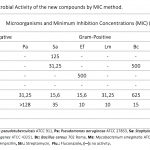
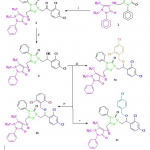

|
381 - 387 |
| α-Amylase Inhibition Properties of Bee Pollen and Bee Bread (Perga) Bee pollen is a valuable bee product with its nutritional and bioactive values according to its protein, lipid, amino acid, vitamin and phenolic content. When bee pollen is converted into bee bread, it becomes more easily digestible in the human digestive system, because of the partial breakdown of the pollen wall, the exine layer, with the effect of fermentation. Therefore, bee bread has a richer nutrient content available than bee pollen. Diabetes mellitus is a metabolic and degenerative disease with long-term effects and inhibition of α-amylase is important for the treatment of this disease. In this study, methanol extract of pollen and perga samples was prepared. Total phenolic content, antioxidant capacity and α-amylase inhibition activity of the extract was determined. Total phenolic content and antioxidant capacity of pollen and perga extract was determined as 5.57-6.93 mg GAE/g and 74.56-97.66 μmol FeSO4.7H2O/g sample, respectively. IC50 value of bee pollen and perga for α-amylase inhibition was found to be 4.21 and 3.57 mg/mL, respectively. It could be concluded that perga may be more effective on Diabetes mellitus. 

|
389 - 393 |